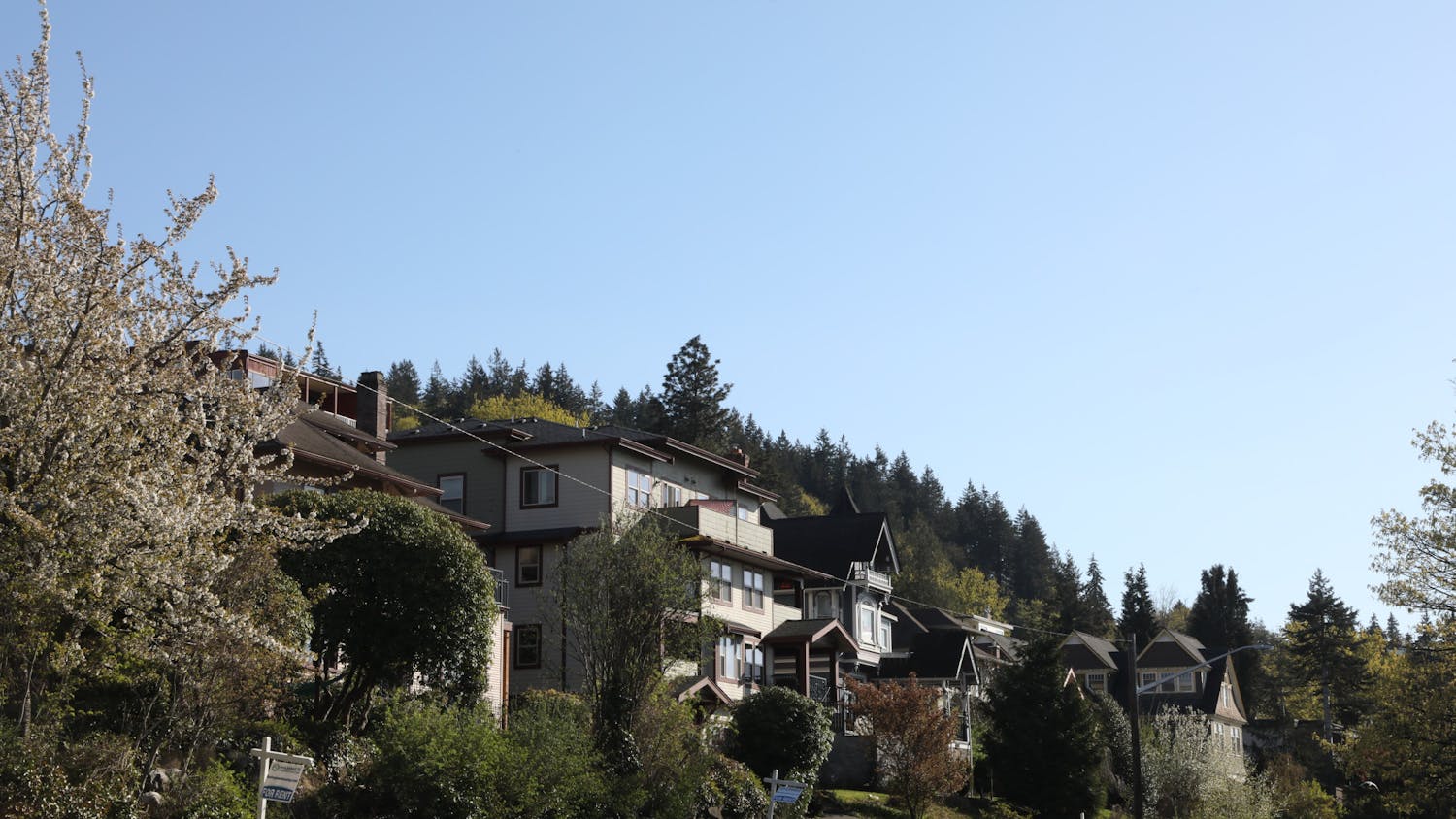Birnam Wood apartments on Monday, Nov. 4. // Photo by Eva Bryner By Eva Bryner Water from nine Birnam Wood apartments tested above 15 parts per billion lead content, exceeding the Environmental Protection Agency’s standard for water quality according to Sue Sullivan, director of environmental health and safety. The EPA has set its maximum lead content goal to zero. Lead is a toxic metal, and ingesting any amount is extremely dangerous, as it can build up in the body over time, according to the EPA. Residents in these nine apartments are being provided bottled water for cooking and drinking, said Liam Cary-Eaves, communication consultant for University Residences. “[University Residences] have been in constant communication with [residents] when more water is going to be delivered as well as requesting that those folks, I believe 35 to 36 individuals, will reach out to us if they're running low,” Cary-Eaves said. Lead in drinking water can have serious long-term effects, such as increased blood pressure, kidney failure and reproduction problems, according to the EPA. Students with concerns about lead were told to refer to the student health center, Sullivan said. Birnam Wood resident Amanda Thomas said she received an email about lead in the community but hasn't had communication from the university since. “I have no idea anything beyond the initial communications, like ‘oh this happened, and we're working on it,’” Thomas said. Schools and universities in Washington state are not required to test their water sources for lead, according to the Washington State Department of Health. Western started testing its water in 2008 and found that 16 buildings on campus had two or more sources of water with over 15 parts per billion lead content, according to the previous sampling results from EHS. “For the areas that tested above 15 parts per billion, we decided to replace the taps,” Sullivan said. “That ended up being what's called a minor capital project that was done in 2013. It took some time to develop the scope and to allocate the funding for that work in 2013.” After samples were taken, it took five years for Western to fund and complete the replacing of taps or pipes in buildings that tested above 15 parts per billion, according to Sullivan. Signage was also posted alerting people of the “non potable water.” “Birnam Wood was not tested in 2008 and that's why we prioritized testing there this time around,” Sullivan said. The EHS used all of their allocated funding for sampling in other locations before Birnam Wood and subsequently did not test it until this year, according to Sullivan. The sampling in 2012 was solely to focus on mitigation locations from testing in 2008 to see if replacing fixtures had changed lead levels, according to Sullivan. All samples from Birnam Wood apartments were taken from the tap after at least 16 hours without being used to ensure accurate results. Some apartments had been unoccupied all summer, and received testing after this extended period of non-use, said David Keeney, safety officer at EHS. When water sits in a pipe, it is more likely to have high lead content, Keeney said. “Time is the controlling factor here,” Keeney said. “The samples that we've been taking all summer have been as conservative as possible to run the clock up as high as we can to try to find lead if it's there. We did that somewhat intentionally because when we sample we want to sample as a worst-possible case scenario … because if you can't find it in the worst case then you know you're good otherwise.” Western has resampled more than 700 drinking water locations on campus, with 95% of sample results being below 15 parts per billion, according to EHS. EHS is yet to release its in-depth report, showing the results of locations tested in 2019. This is anticipated to be released in early November, according to Sullivan. “We have nearly 900 locations that [Keeney] has spearheaded in testing,” Sullivan said. “So it's a lot of data to compress and in order to put out in a format that everybody can access.” City of Bellingham’s testing of drinking water in 2017 showed an average of 4 parts per billion lead content after sampling from homes with lead and copper pipes. The testing reported that any lead found is a direct result of lead pipes or faucets, and is not due to sourcing from Lake Whatcom, according to the 2018 Water Quality Report. The use of lead to wield together pipes that deliver water was banned in 1986, Richard Hoover, water quality specialist for Public Works, said via email. “However, as a utility, we have no way of controlling the plumbing inside of people's homes,” Hoover said. “That is why we apply corrosion control to the water that is delivered as protection against leaching from older household plumbing.” Corrosion control measures ensure that lead or copper are not leaching into the water when it travels through service lines delivering water to houses, according to City of Bellingham Copper and Lead Rule Corrosion Control study. The Water Quality Report also dictates there are no lead pipe service lines delivering water in Bellingham and testing for lead in household drinking water will be conducted again in 2020. “[Western’s] average is right along the city's average for lead, which is around four to five parts per billion … we’re right along where we want to be given what the city's data is,” Sullivan said. “I think we're doing pretty good.”





